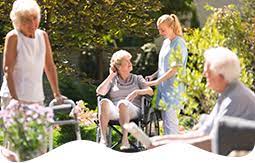Imagine waking up each week knowing you’ll see familiar faces, share a laugh, or learn something new with people who genuinely get you. That’s what social and community support can look like for many Australians with disability—and ndis social groups are often where it starts.
Far beyond just filling time, these groups offer structure, belonging, and meaningful engagement. Whether it’s a local art class, a group walk at the park, or a movie night, social participation helps people build confidence, relationships, and independence.
Understanding Social and Community Support in the NDIS
Under the National Disability Insurance Scheme (NDIS), social and community participation refers to funded supports that help people engage in community life. This includes activities that promote connection, wellbeing, and personal development in a group or community setting.
It can involve:
- Attending regular group programs
- Participating in community outings
- Building everyday social skills
- Connecting with others who have shared interests
For people who might otherwise feel isolated or excluded, ndis social groups provide an accessible way to get involved.
Why Social Participation Matters
Social connection is a human need. But for many NDIS participants, it doesn’t come easily. Barriers like transport, confidence, or lack of inclusive spaces can limit opportunities.
That’s where structured group activities step in. These programs offer more than entertainment—they promote inclusion, emotional wellbeing, and lifelong learning.
Take Sam, a young man with mild intellectual disability who used to spend his days at home. After joining a local music and movement group, he started playing instruments, making friends, and eventually performing in front of others. It gave him purpose, a sense of identity, and a growing social circle.
These outcomes aren’t rare—they’re the goal.
What Happens in NDIS Social Groups?
Ndis social groups can take many forms, depending on age, ability, and personal interests. The key is shared experience in a supportive environment.
Common group formats include:
Art & Creativity Workshops
From painting to pottery, these sessions encourage expression and help participants tap into their imagination—often in relaxed, low-pressure settings.
Sports & Movement Activities
Whether it’s indoor soccer, yoga, or walking groups, these sessions support both physical and mental health, while teaching teamwork and social engagement.
Cooking and Life Skills
Many programs teach practical skills like meal prep or shopping through group settings, where participants can learn alongside peers and support workers.
Social Outings
From ten-pin bowling to museum visits, group outings help participants grow comfortable in community spaces, developing both independence and enjoyment.
These activities are often scheduled weekly and can be adjusted to suit different support needs.
Who Can Access These Supports?
To join an NDIS social group, a participant must have funding in their plan under:
- Core Supports – for everyday assistance and social activities
- Capacity Building – particularly under Increased Social and Community Participation
Participants can work with a support coordinator or plan nominee to find programs that suit their goals.
To explore real options and see what’s available, you can browse active ndis social groups in your area.
The Impact on Everyday Life
The benefits of social group participation go far beyond the group itself. These programs foster ripple effects across many areas of life:
- Better communication: Regular interaction builds conversational skills and confidence.
- Reduced isolation: Being part of a group helps combat loneliness and improve mood.
- Skill-building: Whether it’s teamwork, cooking, or navigating public spaces—these programs encourage development in a real-world context.
- Sense of belonging: Participants feel seen, heard, and connected with others who understand them.
And families often notice positive changes too—participants become more active, independent, and enthusiastic about their routines.
Backed by evidence, social engagement is closely linked to improved mental health and life satisfaction. According to Australia’s Disability Strategy, increasing social and community participation is a national priority for better long-term outcomes.
Choosing the Right Group
Every person is different, and the right social group will depend on a few things:
- Interests and hobbies: What does the participant enjoy doing?
- Support needs: Do they require one-on-one assistance within a group?
- Group size and setting: Some prefer smaller, quieter settings, while others thrive in large social environments.
- Transport and access: Is the group venue easy to reach?
It’s worth trying different activities to find a good match. Most programs allow trial sessions before committing.
To start your search or refer someone you support, check out current ndis social groups for a list of available programs and schedules.
Final Thoughts
Social and community support is more than a checkbox in an NDIS plan—it’s a lifeline to connection, growth, and joy.
Whether it’s learning a new skill, sharing a laugh with friends, or gaining confidence in public spaces, group programs can transform everyday life.
If you’re planning your next NDIS review or supporting someone looking to get involved, consider how ndis social groups can become a meaningful part of that journey. Every conversation, activity, and connection counts.

